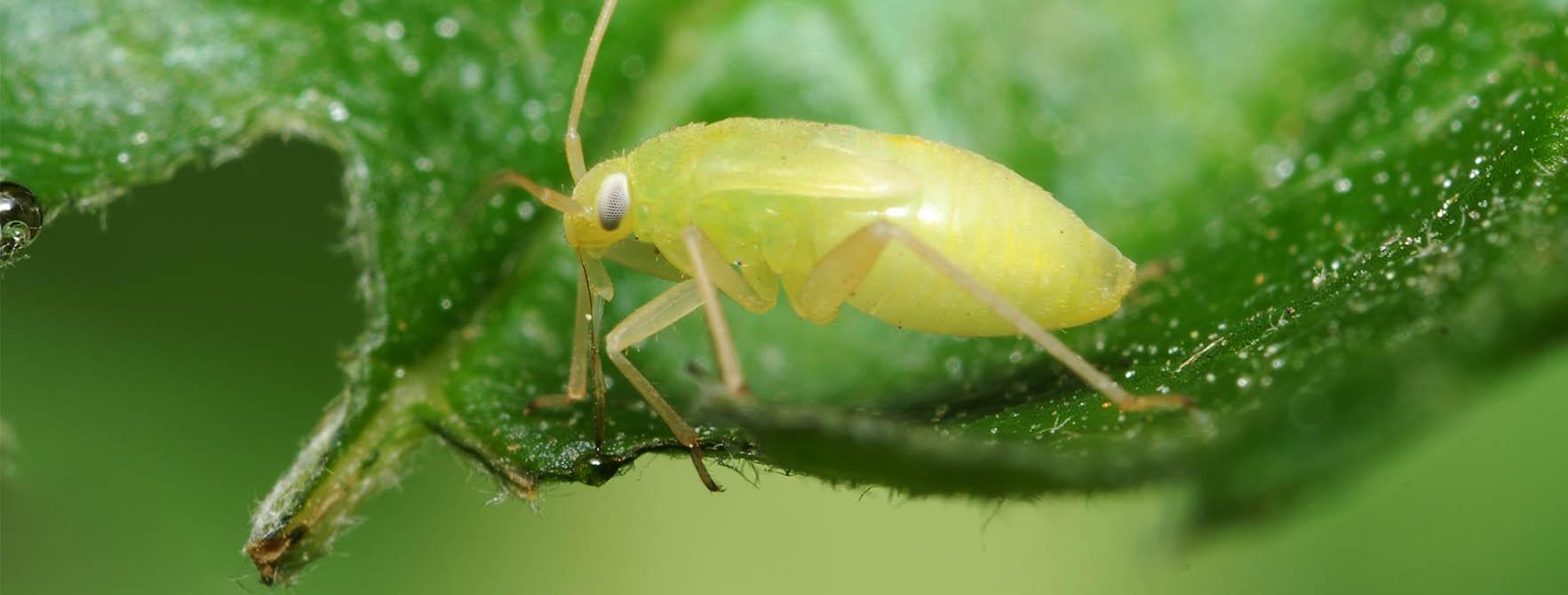More than 4,000 species of aphid exist worldwide, and 250 pester U.S. gardens

Aphids have specialized mouths to suck the fluids from leaves and flowers that the plant uses to distribute nutrients.
Photo courtesy Safer Brands
By Kate Russell

Kate Russell
In Britain, aphids are called plant lice — and for good reason. One of the most destructive pests in the garden, aphids suck valuable nutrients from your Gilroy plants, spread diseases, and leave behind a “honeydew” (sugary bug poop) that creates the perfect habitat for fungal disease. And they don’t work alone.
Ants actively protect, farm, and milk aphids in exchange for honeydew. Ants collect and store aphid eggs over the winter, carrying newly hatched nymphs back to the surface in spring. Other ants manage large herds of aphids that feed on plant roots within the ant colony. When some ant queens leave to start a new colony somewhere else, they take an aphid egg with them when they go.
Besides sucking the life out of garden and landscape plants, aphids are vectors for more than 300 plant diseases. As they walk, they can carry diseases such as cucumber mosaic, Fusarium wilt, potato Y diseases, rust, tobacco mosaic, and more.
At this time of year, it is common for tiny (less than 1/8-inch), pear-shaped aphids to converge under leaves and on new growth. Aphid species can be black, brown, gray, green, orange, pink, yellow, or nearly colorless. Aphids are wingless until conditions change. Somewhere in their genetics, the need for wings is communicated and wings emerge.
 There are more than 4,000 species of aphid worldwide, and 250 that pester U.S. gardens. There are several found here including apple, ash leaf curl, bean, cabbage, European asparagus, green apple, green peach, leaf curl plum, mealy plum, melon, oleander, potato, rose, rosy apple, and wooly aphids.
There are more than 4,000 species of aphid worldwide, and 250 that pester U.S. gardens. There are several found here including apple, ash leaf curl, bean, cabbage, European asparagus, green apple, green peach, leaf curl plum, mealy plum, melon, oleander, potato, rose, rosy apple, and wooly aphids.
Aphids communicate using pheromones. When aphids are attacked, they release pheromones that tell other aphids to flee. Ladybugs have learned to follow those pheromones to find the aphids’ hiding place.
One reason why aphids are so successful is that females do not need males to reproduce. Unfertilized aphid eggs produce male nymphs offspring and fertilized eggs produce females. Aphids are born live and able to have babies of their own within days. A single female can be responsible for up to 600 billion descendants in a single season.
 Many beneficial insects love to eat aphids. These include hoverflies, lacewings, ladybugs, parasitic wasps, pirate bugs, praying mantis, and soldier beetles. Being fragile, aphids can be wiped off plants or squished, but that gets messy. Insecticidal soap can be sprayed on heavily infested plants, but this will only affect the bugs that it contacts directly. The easiest ways to reduce aphid populations is to hit them with a strong spray from the hose and to encourage beneficial insects in the garden.
Many beneficial insects love to eat aphids. These include hoverflies, lacewings, ladybugs, parasitic wasps, pirate bugs, praying mantis, and soldier beetles. Being fragile, aphids can be wiped off plants or squished, but that gets messy. Insecticidal soap can be sprayed on heavily infested plants, but this will only affect the bugs that it contacts directly. The easiest ways to reduce aphid populations is to hit them with a strong spray from the hose and to encourage beneficial insects in the garden.
Check plants twice a week during aphid season, block ant traffic with sticky barriers, and encourage natural predators. While insecticides do kill aphids, they also kill beneficial insects.






